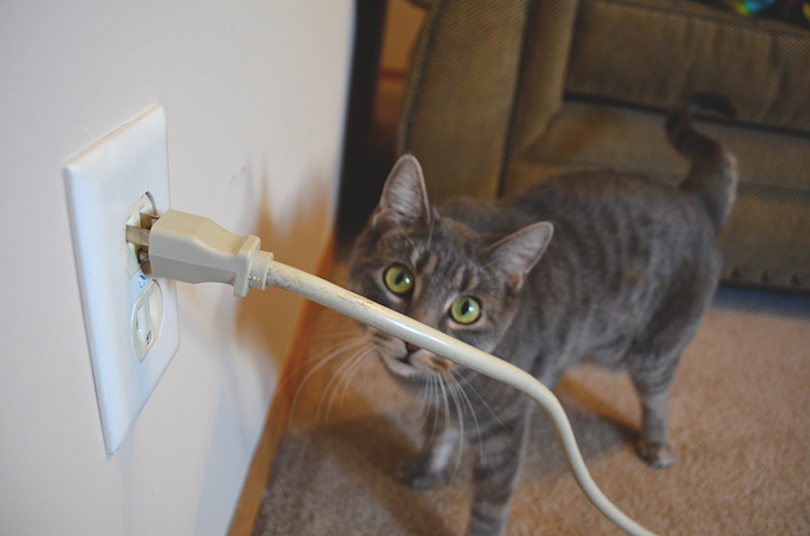For pet owners, playful dogs and curious cats become part of the family. Responsibility is an important part of pet ownership, and your pet’s safety depends on you. You can help keep your furry friend safe by learning about and taking action on potential electrical hazards in your home.
Electrical cords can easily become an object of play for pets, but when sharp teeth clamp down on the cord, break through the rubber coat and expose the wire, this can shock your pet and become a fire hazard in your home. Here are some tips to prevent cords from becoming a chew toy:
• Wind up excess cords and hide them from view or place cords out of the pet’s reach. This could be done by hiding them behind furniture or hanging them off the floor.
• Coat cords with a bitter substance to make them undesirable to pets. Appropriate and safe products can be purchased online or at pet stores.
• Reprimand pets for playing with electrical cords; pets need to learn these are not toys.
• Remember to continuously check cords for fraying or bite marks, and replace them accordingly.
Provide your pet with new and different chew toys to keep them entertained so electrical cords do not become a dangerous replacement.
Make sure plugs are completely plugged into outlets. Partially exposed prongs are a hazard for curious pets. Remember to unplug all appliances and electronics not in use to cut electric current.
Discourage pets from sleeping near or behind electronics or appliances. Many pets are attracted to the warmth, but this is a potential fire hazard. Pets need to be kept away from all electrical connections.
All outlets near sinks or bathtubs should be equipped with a ground fault circuit interrupter (GFCI). Playful pets can knock radios, curling irons and other electrical devices into water, creating a dangerous situation. GFCIs stop the flow of electricity instantly if there is a problem and can save lives.
For those with fish, be sure cords attached to an aquarium have a drip loop — cords that slack below the outlet — to make sure water does not run into the outlet.
If a pet should receive a shock, never touch the animal until you know it is away from the power source or the electric current is shut off in order to prevent injury to yourself. Once it is clear to approach the pet, give it medical treatment immediately.
For more pet safety information, visit SafeElectricity.org.

